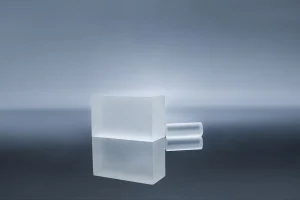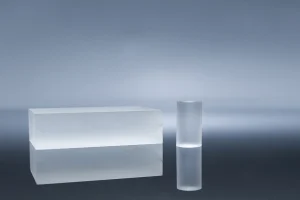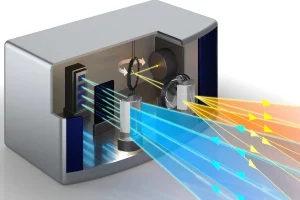Introduction
Lasers have revolutionized numerous fields, from medicine to manufacturing, and their power derives from the properties of their lasing material. One class of lasing materials, red laser crystals, offer unique benefits and properties. In this article, we will delve deep into the power of red laser crystals, specifically comparing Nd:YAG (Neodymium-doped Yttrium Aluminum Garnet), Ruby, and Red Semiconductor lasers.
Understanding the Operating Principles
Nd:YAG Lasers
Nd:YAG lasers operate by exciting neodymium ions embedded in the YAG crystal structure. When light of a specific wavelength stimulates these ions, they emit photons, creating a laser beam. This lasing process takes advantage of neodymium’s unique energy level configuration, which allows for efficient energy transfer and high output power.
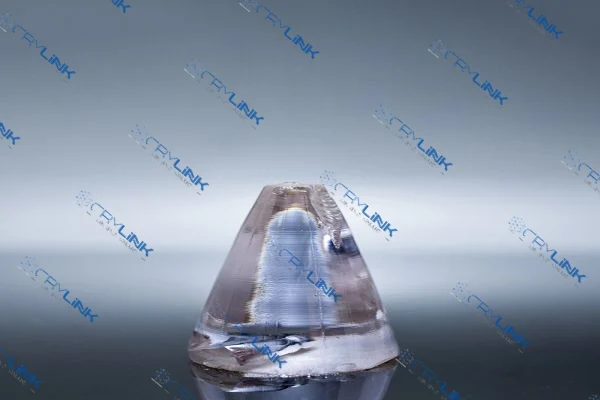
Ruby Lasers
Ruby lasers are the pioneers of solid-state laser technology. The lasing process involves exciting chromium ions within the ruby crystal. The stimulated ions drop back to a lower energy level, emitting laser light in the process. The deep red emission wavelength of ruby lasers gives them their distinct red color.
Red Semiconductor Lasers
In red semiconductor lasers, the lasing action occurs in a diode’s p-n junction. When a current passes through this junction, it creates a condition known as population inversion. The excited electrons drop to a lower energy level, emitting red laser light.
Examining Output Characteristics
Nd:YAG Lasers
These lasers can generate high power outputs in continuous wave or pulsed modes. The 1064nm wavelength they produce is in the infrared region, but frequency doubling can generate green light at 532nm.
Ruby Lasers
Ruby lasers emit pulsed laser light at a wavelength of 694.3nm. They generally have lower output power than Nd:YAG lasers, but they are known for their high peak powers during short pulses.

Red Semiconductor Lasers
Red semiconductor lasers, or diode lasers, produce continuous wave laser light in the red wavelength range, typically around 635-700nm. They are known for their high efficiency and compact size.
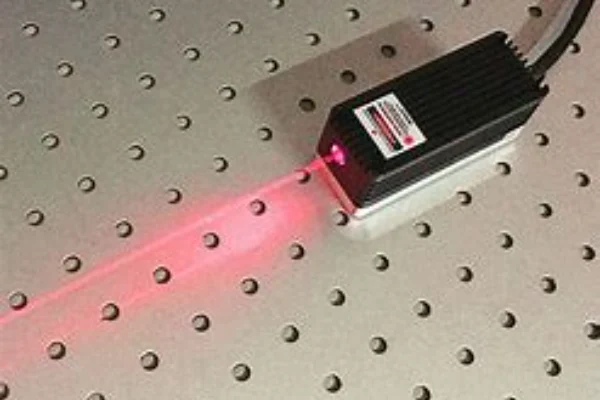
Applications in Various Fields
As we further explore the applications of Nd:YAG, Ruby, and Red Semiconductor lasers, it becomes evident how integral these technologies have become in various sectors.
In laser engraving, the Nd:YAG lasers are highly favored due to their high power output and operational flexibility. They can provide continuous or pulsed output, making them suitable for a wide range of engraving tasks. These lasers can be used to engrave intricate details on various materials, including metals, ceramics, and plastics, making them incredibly versatile. The Nd:YAG lasers can also be finely tuned to control the engraving depth, ensuring high-quality results even on delicate materials.
Ruby lasers, while not as commonly used in engraving as the Nd:YAG lasers, still hold their own in certain niche applications. For instance, due to their high peak power output, Ruby lasers are used in the engraving and cutting of precious stones. They deliver short, powerful pulses of light that can precisely cut or engrave gemstones, creating intricate designs without causing unnecessary damage.
The Red Semiconductor lasers bring a whole different set of advantages to the engraving industry. Owing to their compact size and high efficiency, these lasers are often found in portable engraving devices. These compact engravers are ideal for small businesses and hobbyists, allowing for precise engraving on various materials such as wood, leather, and certain metals.
Laser pointers have long been the domain of Red Semiconductor lasers. Their small size and high efficiency make them perfect for this application. The red light emitted by these lasers is clearly visible and safe for human eyes, making them a staple in classrooms, conferences, and other presentations.
Nd:YAG lasers, due to their high power and infrared output, have also found their way into laser pointers. When frequency-doubled, Nd:YAG lasers produce green light, which is even more visible to the human eye than red light. This makes green laser pointers, powered by Nd:YAG lasers, popular in situations where visibility is crucial.
Medical treatments have seen a significant impact from laser technology, and Nd:YAG, Ruby, and Red Semiconductor lasers all play their roles. Nd:YAG lasers are used in various treatments, including laser eye surgery, dental procedures, and even cancer treatment. These lasers can deliver high-energy light to a precise location, making them ideal for surgeries and other medical procedures where precision is key.
Ruby lasers, with their visible red light, have found their use in dermatology. They are often used for treating skin conditions and removing tattoos. The high peak power of Ruby lasers can target the tattoo pigment or damaged skin cells without affecting the surrounding skin, making these treatments safe and effective.
Red Semiconductor lasers are extensively used in low-level laser therapy (LLLT) and photodynamic therapy. In LLLT, the red light from these lasers helps promote wound healing and reduce inflammation. In photodynamic therapy, these lasers activate a photosensitizing agent to destroy cancer cells. With their high efficiency and operational longevity, Red Semiconductor lasers are an essential part of modern medical technology.
In conclusion, Nd:YAG, Ruby, and Red Semiconductor lasers have made significant contributions to various fields. Their unique characteristics and capabilities have enabled advancements in industrial, medical, and consumer applications. As laser technology continues to evolve, we can expect these lasers to play an even bigger role in shaping our future.
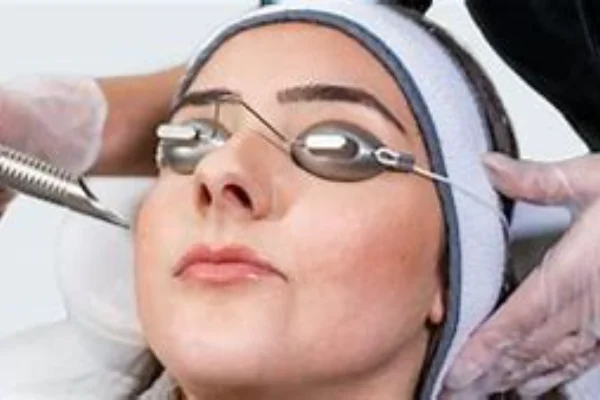
Comparing Advantages
When comparing the advantages of Nd:YAG, Ruby, and Red Semiconductor lasers, it becomes clear that each laser type offers a unique set of strengths that make them suitable for a diverse range of applications.
Nd:YAG lasers have a robust and flexible performance that makes them one of the most versatile lasers available. Their ability to produce a high output power in both continuous wave and pulsed modes provides the option for users to select the optimal mode for their specific application. Additionally, the infrared output of Nd:YAG lasers can be absorbed by a wide range of materials. This property, combined with the high power output, makes Nd:YAG lasers the preferred choice for many industrial applications such as cutting, welding, and drilling.
Ruby lasers have the remarkable ability to generate high peak power in short bursts. This unique capability makes them especially suitable for applications that require a substantial amount of energy in a short duration. For instance, in laser-induced breakdown spectroscopy, the high peak power of Ruby lasers is used to ionize a sample, thus enabling the spectroscopic analysis of its atomic composition. Moreover, the visible red output of Ruby lasers provides an added benefit for alignment and targeting purposes in various applications, enhancing user control and precision.
Red Semiconductor lasers distinguish themselves with their compact size, high efficiency, and long operational life. The small size of these lasers allows for their integration into compact devices, such as laser pointers, DVD players, and barcode scanners. The high efficiency of Red Semiconductor lasers means that they can convert a high proportion of electrical power into light, making them energy-efficient and cost-effective in the long run. Furthermore, their long operational life reduces the need for frequent replacements, further enhancing their cost-effectiveness.
In the realm of consumer electronics, the compact size and efficiency of Red Semiconductor lasers have made them a fundamental component in many devices. They are used in CD players, DVD players, and Blu-ray players to read data from the disc. In communication technology, these lasers play a critical role in transmitting information in fiber-optic cables. The ability of Red Semiconductor lasers to produce light at specific, stable wavelengths enables the transmission of vast amounts of data over long distances.
Red Semiconductor lasers also play a crucial role in medical therapy. For example, in photodynamic therapy, a treatment for certain types of cancer, Red Semiconductor lasers are used to activate a drug that can kill cancer cells. The lasers are tuned to a specific wavelength that activates the drug, causing it to produce a form of oxygen that is toxic to the cancer cells. Furthermore, these lasers are used in low-level laser therapy, a non-invasive treatment that can alleviate pain, reduce inflammation, and promote wound healing.
From the above discussion, it’s clear that each of these laser types—Nd:YAG, Ruby, and Red Semiconductor—has its own set of advantages that make them ideally suited to a diverse range of applications. Whether it’s in the realm of industrial manufacturing, scientific research, consumer electronics, or medical therapy, these lasers continue to play an indispensable role in driving advancements across various fields.
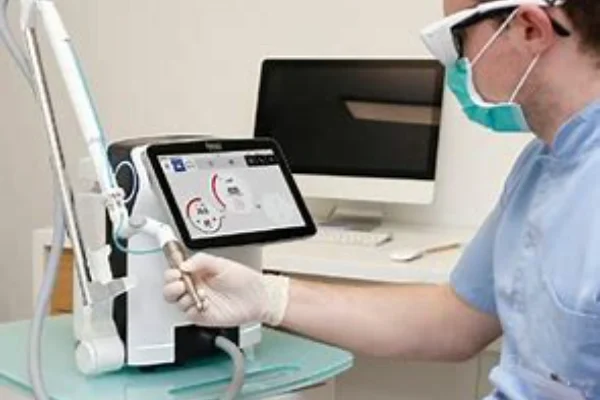
Conclusion
Nd:YAG, Ruby, and Red Semiconductor lasers each bring unique advantages to the table. Their individual operating principles, output characteristics, applications, and benefits underline the power and versatility of red laser crystals. As technology advances, we can expect these lasers to play an even more critical role across various sectors.
Frequently Asked Questions
- Q1: Why are red semiconductor lasers widely used in laser pointers?
- Answer: Their compact size, high efficiency, and suitable emission wavelength make them an ideal choice for laser pointers.
- Q2: Can Nd:YAG lasers be used for medical treatments?
- Answer: Yes, Nd:YAG lasers are extensively used in various medical treatments including eye surgeries and cancer treatments.
- Q3: What is unique about the operating principle of Ruby lasers?
- Answer: Ruby lasers operate by exciting chromium ions within the ruby crystal, making them one of the first types of solid-state lasers.
- Q4: How do Nd:YAG lasers produce high output power?
- Answer: Nd:YAG lasers utilize the unique energy level configuration of neodymium ions which allows for efficient energy transfer and high output power.
- Q5: Why are Red Semiconductor lasers highly efficient?
- Answer: Red Semiconductor lasers, or diode lasers, are designed to have a high quantum efficiency, meaning they can convert a high percentage of input electrical power into light.


